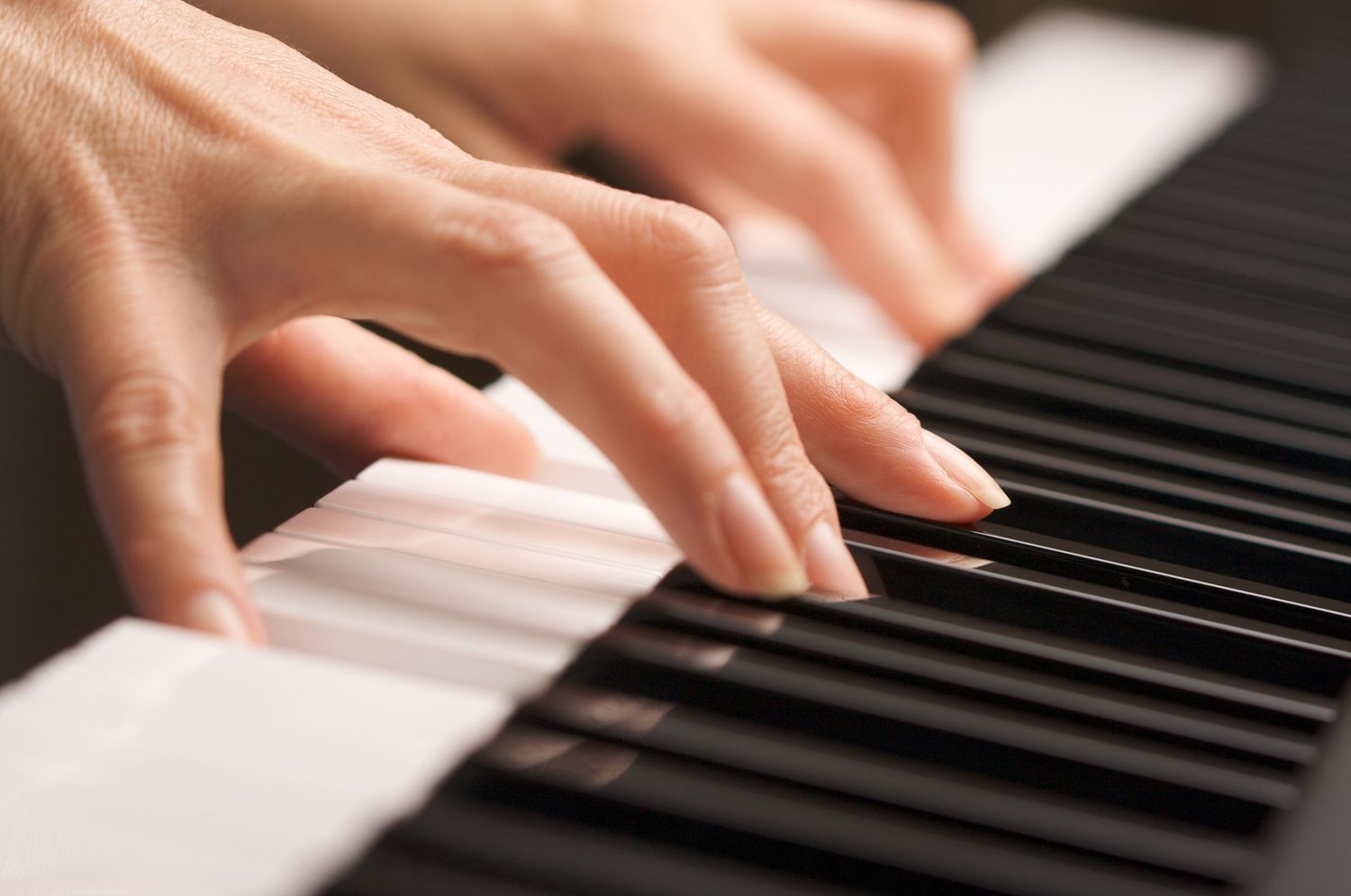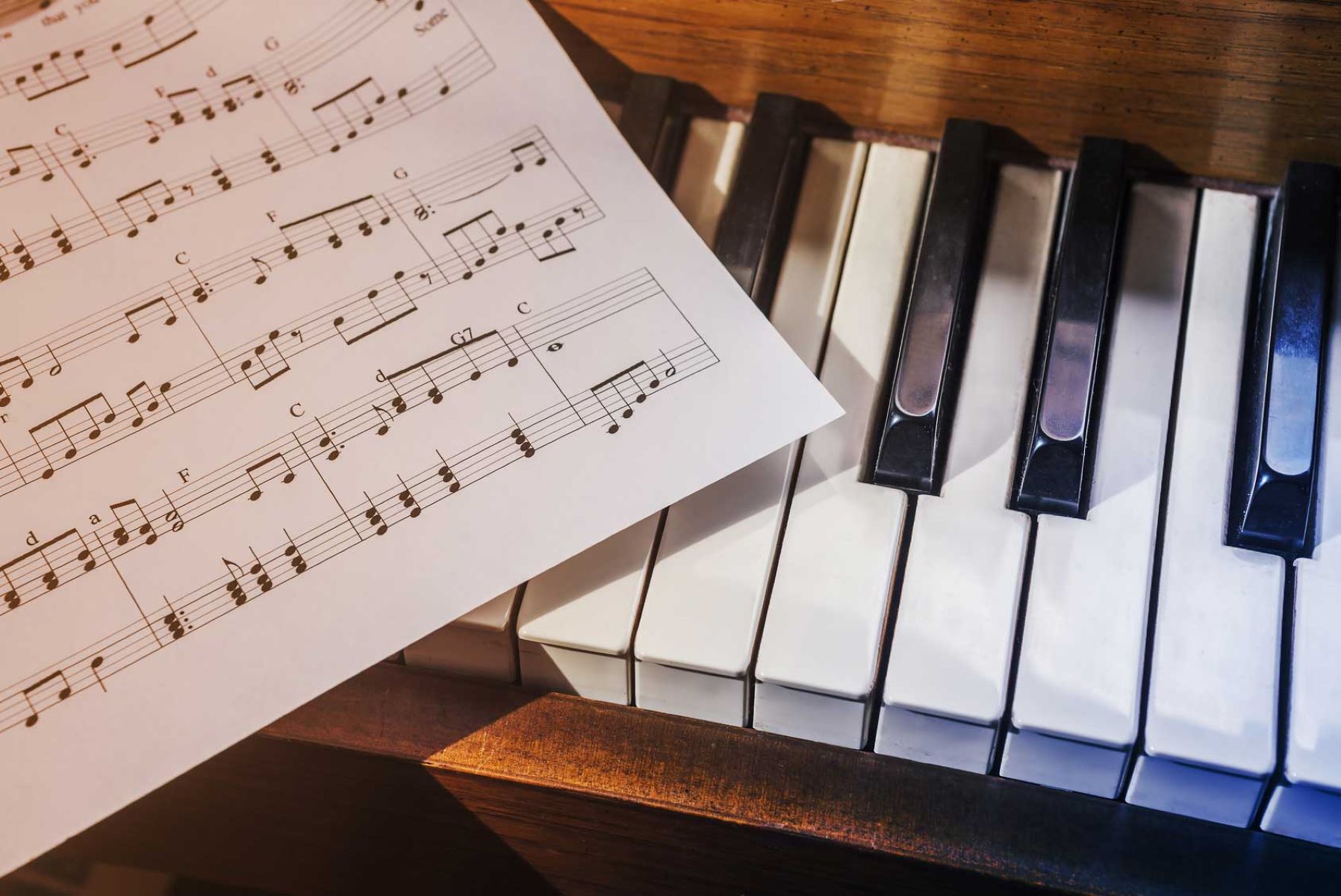Home>Instruments>Piano>How To Learn Songs On Piano


Piano
How To Learn Songs On Piano
Published: February 10, 2024
Learn how to play your favorite songs on the piano with our step-by-step guide. Master the piano and impress your friends with your musical skills.
(Many of the links in this article redirect to a specific reviewed product. Your purchase of these products through affiliate links helps to generate commission for AudioLover.com, at no extra cost. Learn more)
Table of Contents
How To Learn Songs On Piano
Introduction
Learning to play songs on the piano is a rewarding and enriching experience. Whether you're a beginner or an experienced pianist, mastering a new song can be both challenging and fulfilling. In this guide, we'll explore the step-by-step process of learning songs on the piano, from choosing the right song to adding rhythm and dynamics. By following these techniques and tips, you can enhance your piano playing skills and develop a deeper understanding of music.
The journey of learning a new song on the piano begins with selecting the right piece of music. This crucial decision sets the foundation for your learning process and can significantly impact your motivation and progress. Once you've chosen a song that resonates with you, the next steps involve breaking down the song, learning the melody, mastering the chords, and adding rhythm and dynamics. Each of these stages contributes to a comprehensive understanding of the piece and enables you to infuse your unique musical interpretation into the performance.
Throughout this guide, we'll delve into the intricacies of each stage, offering practical tips and techniques to facilitate your learning journey. From deciphering complex melodies to incorporating expressive dynamics, you'll gain valuable insights that will elevate your piano playing abilities. Additionally, we'll explore effective practice strategies to optimize your learning and retention of the song. With dedication and perseverance, you can conquer the challenges of learning new songs on the piano and experience the joy of musical accomplishment.
Whether you aspire to play classical masterpieces, contemporary hits, or your original compositions, the fundamental principles of learning songs on the piano remain consistent. By honing your skills in song interpretation, technical proficiency, and musical expression, you'll unlock the potential to captivate audiences and evoke emotions through your piano performances. Embrace the journey of learning songs on the piano, and let the music resonate with your soul as you embark on this enriching musical endeavor.
Choosing the Right Song
When embarking on the journey of learning a new song on the piano, the first and perhaps most crucial step is selecting the right piece of music. The song you choose should resonate with your musical preferences, evoke emotions, and inspire your dedication throughout the learning process. Consider the following factors when choosing a song:
- Personal Connection: Opt for a song that holds personal significance or resonates with your emotions. Whether it’s a nostalgic melody from your childhood or a contemporary piece that speaks to your soul, a personal connection to the song can fuel your motivation and commitment to mastering it.
- Appropriate Difficulty: Evaluate the complexity of the song and ensure that it aligns with your current skill level. While challenging yourself is essential for growth, selecting a song that is overly advanced may lead to frustration and hinder your progress. Conversely, choosing a song that is too simplistic might not provide the necessary stimulation for skill development.
- Musical Style: Explore a diverse range of musical genres and styles to expand your repertoire. Whether you’re drawn to classical compositions, jazz standards, pop hits, or cinematic soundtracks, embracing variety can enhance your musical versatility and broaden your artistic horizons.
- Emotional Impact: Consider the emotional depth and expressive potential of the song. A piece with poignant melodies, captivating harmonies, or dynamic contrasts can offer a profound platform for musical interpretation and artistic expression.
Furthermore, it’s essential to envision the end goal of learning the song. Whether you aim to perform it for personal enjoyment, share it with an audience, or incorporate it into a broader musical project, aligning your song choice with your aspirations can provide a sense of purpose and direction.
As you navigate the process of selecting a song, trust your instincts and allow your passion for music to guide your decision. Embrace the opportunity to explore diverse musical landscapes, uncover hidden gems, and embark on a musical journey that resonates with your heart and soul.
Breaking Down the Song
Once you’ve chosen the right song to learn on the piano, the next step involves breaking down the piece into manageable components. This deconstruction process allows you to gain a comprehensive understanding of the song’s structure, melody, harmony, and rhythm. Here are the key elements to consider when breaking down a song:
- Song Structure: Analyze the overall structure of the song, including its verses, choruses, bridges, and any instrumental interludes. Understanding the arrangement of the song provides insight into its narrative flow and emotional dynamics.
- Melody and Harmony: Identify the primary melody of the song, as well as the underlying harmonic progression. Pay attention to recurring motifs, melodic variations, and harmonic transitions that shape the musical landscape of the piece.
- Rhythmic Patterns: Study the rhythmic patterns and meter of the song, discerning the rhythmic accents and syncopations that contribute to its groove and momentum.
- Chord Progressions: Uncover the chord progressions that underpin the song, recognizing the harmonic movement and relationships between different chords. This understanding forms the foundation for accompanying the melody and creating harmonic embellishments.
Breaking down the song into these fundamental elements enables you to approach learning in a systematic and structured manner. It also facilitates a deeper connection with the music, allowing you to appreciate the nuances and intricacies embedded within the composition.
Additionally, consider utilizing sheet music or chord charts to aid in the analysis and deconstruction of the song. These resources can provide valuable insights into the musical notation, chord voicings, and rhythmic patterns, serving as a roadmap for your learning journey.
By immersing yourself in the process of breaking down the song, you’ll develop a holistic grasp of its musical architecture, paving the way for a more informed and nuanced interpretation. Embrace the opportunity to dissect the song’s components, and unravel the tapestry of melodies, harmonies, and rhythms that collectively form its artistic essence.
Learning the Melody
Once you have deconstructed the song and gained a comprehensive understanding of its structure and harmonic elements, the next phase of learning involves mastering the melody. The melody serves as the focal point of the song, carrying its emotive essence and thematic motifs. Here are effective strategies for learning and internalizing the melody:
- Listening and Internalization: Begin by listening to recordings of the song, focusing on the melody’s phrasing, dynamics, and expressive nuances. Internalize the melodic contours and inflections, allowing the essence of the melody to resonate within you.
- Hands-Separate Practice: Divide the learning process by practicing the melody with each hand separately. This approach provides clarity in understanding the melodic line and allows for independent refinement of each hand’s dexterity and expression.
- Slow and Steady Progression: Practice the melody at a comfortable, manageable tempo, ensuring precision and accuracy in your execution. Gradually increase the tempo as your proficiency improves, maintaining a balance between technical control and musical interpretation.
- Phrasing and Articulation: Pay attention to phrasing and articulation, delineating the melodic phrases with appropriate breaths and expressive shaping. Emphasize the musical punctuation and nuances that convey the emotional depth of the melody.
- Expressive Interpretation: Infuse the melody with your unique expressive interpretation, incorporating subtle variations in dynamics, timing, and tonal shading. Cultivate a deep connection to the emotional narrative of the melody, allowing your performance to resonate with authenticity and depth.
Furthermore, consider exploring different interpretations of the melody, studying performances by various artists to glean insights into diverse stylistic approaches and expressive nuances. This exposure can enrich your perspective and inspire creative reinterpretations of the melody.
As you immerse yourself in the process of learning the melody, embrace the opportunity to internalize its emotive essence and convey its narrative with sincerity and artistry. By honing your skills in melody interpretation, you’ll unlock the potential to captivate listeners and evoke profound emotions through your piano performance.
Mastering the Chords
Alongside learning the melody, mastering the chords forms a pivotal aspect of interpreting and performing a song on the piano. Chords provide the harmonic framework that supports the melody, contributing to the song’s overall texture and emotional resonance. To effectively master the chords of a song, consider the following strategies:
- Chord Identification: Begin by identifying the primary chords within the song, recognizing their inversions and voicings. Understanding the harmonic progression and the relationship between chords is essential for creating a solid foundation for the melody.
- Hand Positioning and Transitioning: Practice transitioning between chords with fluidity and precision, focusing on optimal hand positioning and efficient finger movements. Smooth chord transitions enhance the continuity and flow of the song’s harmonic accompaniment.
- Dynamic Variations: Experiment with dynamic variations within the chord progressions, incorporating subtle changes in touch and intensity to convey expressive nuances. This dynamic shaping adds depth and emotional resonance to the harmonic backdrop of the song.
- Incorporating Extensions and Embellishments: Explore the incorporation of chord extensions, such as sevenths, ninths, and suspensions, to enrich the harmonic palette and infuse the accompaniment with color and complexity.
- Understanding Functional Harmony: Delve into the concept of functional harmony, comprehending the functional roles of different chords within the song’s tonal framework. This understanding empowers you to make informed interpretive decisions and craft compelling harmonic progressions.
Additionally, leverage resources such as chord charts and lead sheets to aid in the mastery of chords, providing visual references and harmonic annotations that facilitate your learning process. These tools offer valuable insights into chord voicings, harmonic structures, and rhythmic accompaniment patterns.
By immersing yourself in the exploration of chords and harmonic progression, you’ll enhance your capacity to provide a rich and supportive backdrop for the melody, elevating the overall musical interpretation of the song. Embrace the journey of mastering the chords, and infuse your harmonic accompaniment with creativity, sensitivity, and expressive depth.
Adding Rhythm and Dynamics
Once you have developed proficiency in the melody and chords of a song, the integration of rhythm and dynamics becomes instrumental in shaping the expressive character and emotive depth of your piano performance. Here are essential considerations for adding rhythm and dynamics to your rendition of the song:
- Rhythmic Precision: Focus on achieving rhythmic precision in your playing, internalizing the rhythmic patterns and syncopations inherent in the song. Pay attention to the interplay between melody and rhythm, ensuring a cohesive and propulsive rhythmic foundation.
- Dynamic Shaping: Embrace dynamic shaping to convey the emotional nuances and dramatic contours of the song. Explore a spectrum of dynamic contrasts, ranging from delicate pianissimo passages to powerful fortissimo climaxes, to imbue the performance with expressive depth.
- Articulation and Phrasing: Refine your articulation and phrasing, delineating the musical phrases with clarity and expressive intent. Utilize techniques such as legato, staccato, and accentuation to articulate the rhythmic and melodic motifs with precision and artistry.
- Rhythmic Variations and Groove: Experiment with rhythmic variations and groove, infusing the performance with subtle rhythmic embellishments and syncopated accents. This exploration adds a sense of vitality and rhythmic dynamism to your interpretation of the song.
- Tempo Considerations: Deliberate on the optimal tempo for the song, considering the expressive implications of different tempos on the overall mood and narrative delivery. Whether it’s a languid ballad or an animated up-tempo piece, the tempo choice significantly influences the emotional impact of the performance.
Furthermore, draw inspiration from diverse musical genres and styles to inform your rhythmic and dynamic choices, allowing for a nuanced and eclectic approach to musical interpretation. Studying performances by renowned pianists across various genres can provide valuable insights into rhythmic diversity and expressive freedom.
By infusing the song with compelling rhythmic vitality and dynamic expressiveness, you’ll elevate the performance to resonate with emotional depth and captivating musicality. Embrace the interplay of rhythm and dynamics as a means to convey the narrative arc and poignant sentiments encapsulated within the song, enriching your piano interpretation with evocative artistry.
Practice Tips
Effective and focused practice is essential for mastering a new song on the piano. Incorporating strategic practice techniques can optimize your learning process and enhance the proficiency of your performance. Consider the following practice tips to elevate your piano playing skills and deepen your musical interpretation:
- Structured Practice Sessions: Allocate dedicated time for focused practice sessions, organizing your practice routine into segments that address specific aspects of the song, such as melody, chords, rhythm, and dynamics. This structured approach fosters comprehensive skill development.
- Slow and Methodical Practice: Begin by practicing the song at a comfortable, slower tempo, focusing on precision, accuracy, and musical expression. Gradually increase the tempo as you gain fluency, ensuring a balanced approach to technical mastery and musical interpretation.
- Isolated Skill Refinement: Isolate challenging passages or technical elements within the song, and devote concentrated practice to refine and master these specific areas. Targeted practice on isolated skills accelerates overall progress and proficiency.
- Consistent Repetition: Embrace the power of consistent repetition, revisiting sections of the song that require refinement and reinforcement. Repetitive practice solidifies muscle memory and enhances fluency in executing complex passages.
- Expressive Experimentation: Encourage expressive experimentation during practice, exploring diverse interpretations of the melody, chords, and dynamics. Embrace creative freedom and imaginative exploration to infuse your performance with individuality and artistic depth.
- Utilize Metronome and Recording: Incorporate the use of a metronome to develop rhythmic precision and temporal accuracy. Additionally, record your practice sessions to evaluate your progress, identify areas for improvement, and track your musical evolution over time.
- Mental Rehearsal and Visualization: Engage in mental rehearsal and visualization of the song, envisioning the performance in your mind’s ear and internalizing the musical nuances. Mental practice enhances memorization and fosters a profound connection to the musical narrative.
- Rest and Reflection: Allow for periods of rest and reflection during practice, enabling mental assimilation and emotional connection with the music. Balancing intense practice with moments of contemplation cultivates a holistic approach to musical learning.
By integrating these practice tips into your learning regimen, you can optimize your practice sessions, cultivate technical proficiency, and imbue your piano performance with expressive artistry. Embrace the journey of disciplined and purposeful practice, and witness the transformation of your musical interpretation as you delve into the intricacies of the song.
Conclusion
The process of learning songs on the piano is a multifaceted and enriching endeavor that encompasses musical interpretation, technical proficiency, and expressive artistry. From the initial selection of a song to the integration of rhythm and dynamics, each stage of the learning journey offers opportunities for growth and creative exploration.
By choosing a song that resonates with personal significance and aligns with your musical aspirations, you lay the foundation for a meaningful and fulfilling learning experience. Breaking down the song into its structural and harmonic components provides a comprehensive understanding of its artistic essence, paving the way for nuanced interpretation.
As you delve into learning the melody and mastering the chords, you immerse yourself in the melodic narratives and harmonic landscapes of the song, infusing your performance with depth and emotional resonance. The integration of rhythm and dynamics adds a layer of expressive vitality, shaping the musical narrative and evoking poignant sentiments through your piano interpretation.
Effective practice techniques, including structured sessions, deliberate repetition, and expressive experimentation, serve as catalysts for skill refinement and artistic refinement. Through disciplined and focused practice, you refine your technical proficiency and cultivate a profound connection to the music, fostering a transformative musical journey.
Embrace the process of learning songs on the piano as a means of personal and artistic growth, allowing the music to resonate with your soul and inspire your creative expression. Whether you embark on classical masterpieces, contemporary hits, or original compositions, the journey of learning songs on the piano unfolds as a testament to your dedication, passion, and evolving musical prowess.
As you navigate the intricacies of each stage in the learning process, remember to infuse your interpretation with authenticity, creativity, and emotional depth. Let the music be your guide as you embark on this enriching musical endeavor, and may your piano performances captivate audiences and evoke profound emotions, transcending the boundaries of notes and melodies to resonate with the essence of the human spirit.











